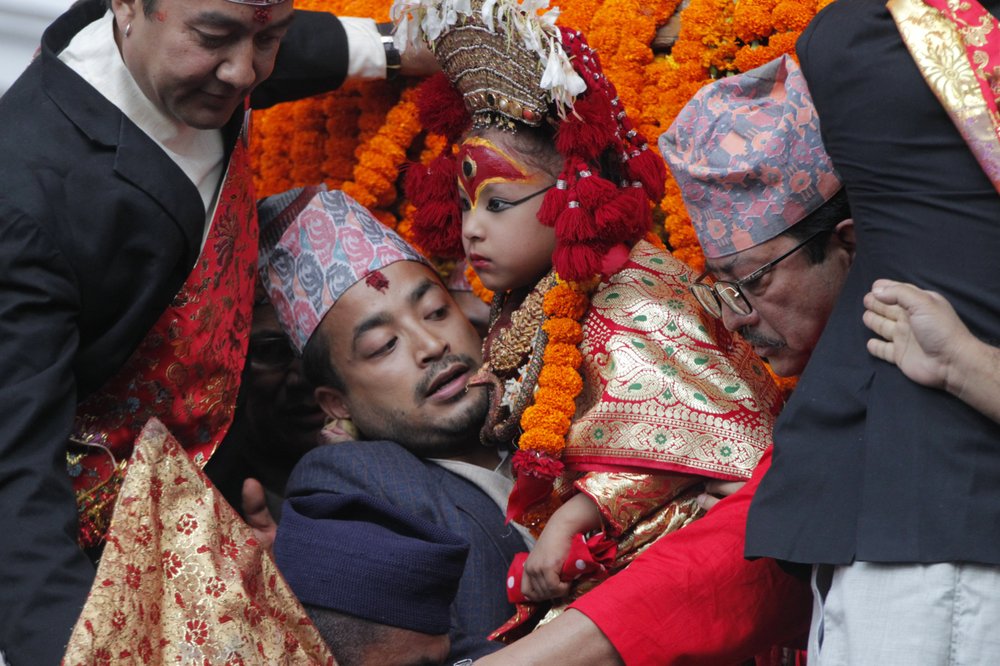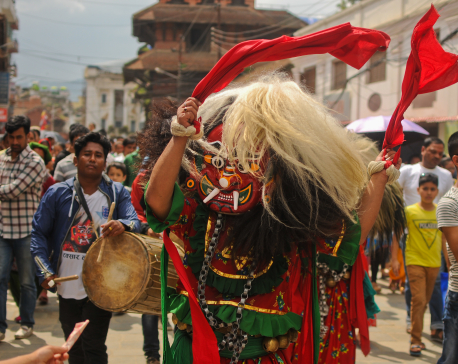
OR
Kumari tradition from the rights perspective
Published On: November 28, 2020 11:01 AM NPT By: Lumana Upreti


Lumana Upreti
Lumana Upreti is a fifth year law student at West Bengal National University of Juridical Sciences.news@myrepublica.com
More from Author
Kumari tradition is not barbaric as it is portrayed. But why is it still considered as an inhuman example of child abuse in UN reports?
The tradition of worshipping Kumari dates back to the 13th century. The word Kumari stems from a Sanskrit word Kaumarya, meaning a princess. A Kumari is a girl child who is considered an embodiment of spiritual energy and divinity, a living manifestation of Taleju Bhawani (incarnation of Goddess Durga).
A girl from a Buddhist community is chosen to be a Hindu Goddess and is worshipped by both the communities. The interwoven culture of two religions and harmony is exemplary. She was believed to be the nation's goddess during the time of monarchy, and it is believed that she protects the nation from evil. A normal girl is transformed into a goddess of power through "mystic rituals of tantraism".
This customary practice, however, has recently faced criticism. Many human rights activists have denounced this particular practice stating that it violates the child’s rights. However, viewing the particular tradition through the lens of cultural relativism has remained unplumbed. Is human rights truly universal or do cultural rights clash with universality?
Despite being a Western concept, human rights is a universal concept cemented through internationally ratified treaties. Nevertheless, cultural relativity and diversity are irrefragable reality. Cultural relativists put forth the argument that universal human rights are inconsiderate toward other cultures. Cultural relativism stresses upon cultural pluralism, celebrating and respecting diverse cultures. The cultural relativism exponents put forth the argument that local cultures can ensure human dignity. They generally describe culture as an indispensable aspect of sovereignty and self-determination.
International norms are viewed as an arbitrary imposition by the so-called influential states of the world. They believe that these powerful nations have been foisting the ideals set out by them in other countries, which essentially can be called "modern colonization." In light of this standpoint, there is barely any reason to contend that international standards should prevail over culture, religion, and nation's history.
Cultural relativism proponents such as Makau Matua have called this a Western 'cultural imperialism'. He argues that the universal nature of human rights questions the state's cultural fabric and deems it inferior compared to the norms of the West. Hence, it is a planned endeavour to civilize the east and enforce the practice of the "capitalism and multi-party system of democracy that favours the Western states,” he argues. This is reasonably true, as mostly incorporation of capitalism and multi-party democracy allows enjoyment of human rights.
Additionally, Matua opines that the Western states have projected universal human rights as a veil to cover their Western imperialism and inculcated the benevolent idea of human rights by romanticizing it. He even argues that international organizations that supervise the implementation of human rights standards implicitly propagate "damning metaphors" of "savages, victims and saviours".
In relation to the discourse of Kumari tradition in light of human rights, a petition was filed in the Supreme Court in 2005 to discard the tradition. The human rights advocates cited that the tradition deprives the child of her rights and her childhood. The reports submitted by the Committee on the Elimination of Discrimination against Women (CEDAW) in 2004 and the Child Rights Convention in 2005 were used to substantiate the contentions made before the Court. Many submissions regarding the tradition were made in the Court, such as coercion, holding a child captive, cruelty and petrifying rituals, and so on. Furthermore, the superstitious rumor that on marrying a former Kumari, her husband would die, has attached a stigma.
However, former Kumaris find the claims and allegations concerning the tradition staggering. A former Kumari, Rashmila, in her book refuted most of the claims made by human rights activists, including the insistent narrative about the child being coerced to spend a night in a dark room surrounded by buffalo heads. She stated that her life inside the Kumari house was joyful. She further asserted that "her problems were less than, for example, the difficulties faced by the children of divorced or separated parents."
Scrutinizing the Kumari tradition for violation of human rights premised on Western norms appears to be imperialistic, so as to force the Western standard that perhaps would never be able to comprehend this culture completely. Concerning child abuse, the child is not exploited in any manner or forced to become Kumari. Moreover, the parents consensually take their child to the selection process. It is a matter of pride for them. The significance of this tradition is often undermined and considered superstitious in contemporary times. The child goddess is looked after with care, love, respect, food, clothes, shelter, and education. In terms of socialization, their parents, relatives, and friends are allowed to visit her daily.
The tradition is not barbaric as it is portrayed to be. The question persists as to why it is still considered as an inhuman example of child abuse in UN reports. It can be fairly said that it is because it is beyond the comprehension of the Western norms. Moreover, an analogy can be drawn with boarding schools to understand the Kumari tradition. Children are sent to boarding schools at an early age and are separated from their parents. The concept of boarding school coming from Western culture is normalized, whereas the Kumari tradition where a girl child is celebrated for her divinity and strength is depicted to be a savage culture.
Though cultural relativism has often been misused time and again by exploitative governments, it still is a vital aspect that deserves its attention against the human rights that are mostly Western born. The Kumari tradition has been going on since ancient times, and it must be acknowledged that it is deeply entrenched in Nepali culture, and it holds the utmost significance. There stands no question of abolishing the tradition. Nonetheless, in order to reconcile the collective cultural rights and the human rights of a child, the rights of the girl need to be ensured. She should not be denied opportunities for her overall development. The state has to ensure that the Kumari is counseled and rehabilitated in the society at the time of relinquishing her position as Kumari. It is imperative to create a balance between human rights and cultural rights so as to preserve the culture of the nation.
You May Like This

Photos: Matatirtha Temple premises all silent and empty amid coronavirus fears
KATHMANDU, April, 23: Matatirtha Aunshi or Aamako Mukh Herne Din (Mother’s Day) is being celebrated on Thursday throughout the country. Read More...

Lakhe dance competition from Sept 19
CHITWAN, Sept 15: The 6th national lakhe dance competition is to be held in Narayangadh on coming September 19 and 20. Read More...

Outreach Nepal lifts Nepal Ice AAN Futsal
KATHMANDU, May 13: Outreach Nepal has lifted the first ever Nepal Ice AAN Futsal Tournament 2018 defeating Media Basket by a... Read More...






Just In
- Class 12 exam starts today with participation of over 390,000 candidates
- Weather expected to be partially cloudy in hilly areas, clear in remaining areas
- Navigating the Digital Diplomacy Divide: Balancing Tradition and Technology in Global Relations
- Youth attempts suicide amid police torture over Facebook comments against home minister
- Time to declare EVMs’ end
- World Malaria Day: Foreign returnees more susceptible to the vector-borne disease
- MoEST seeks EC’s help in identifying teachers linked to political parties
- 70 community and national forests affected by fire in Parbat till Wednesday












Leave A Comment